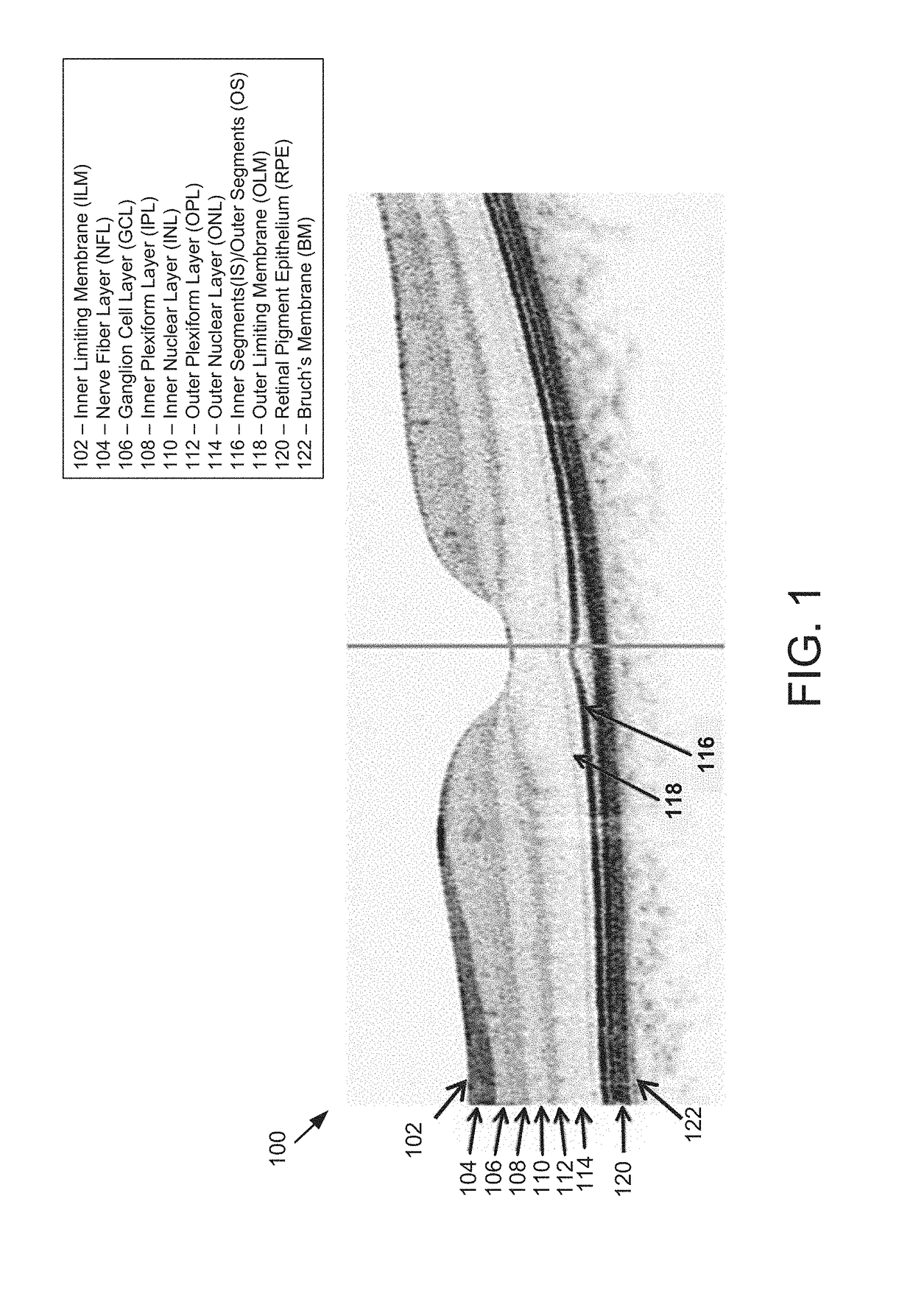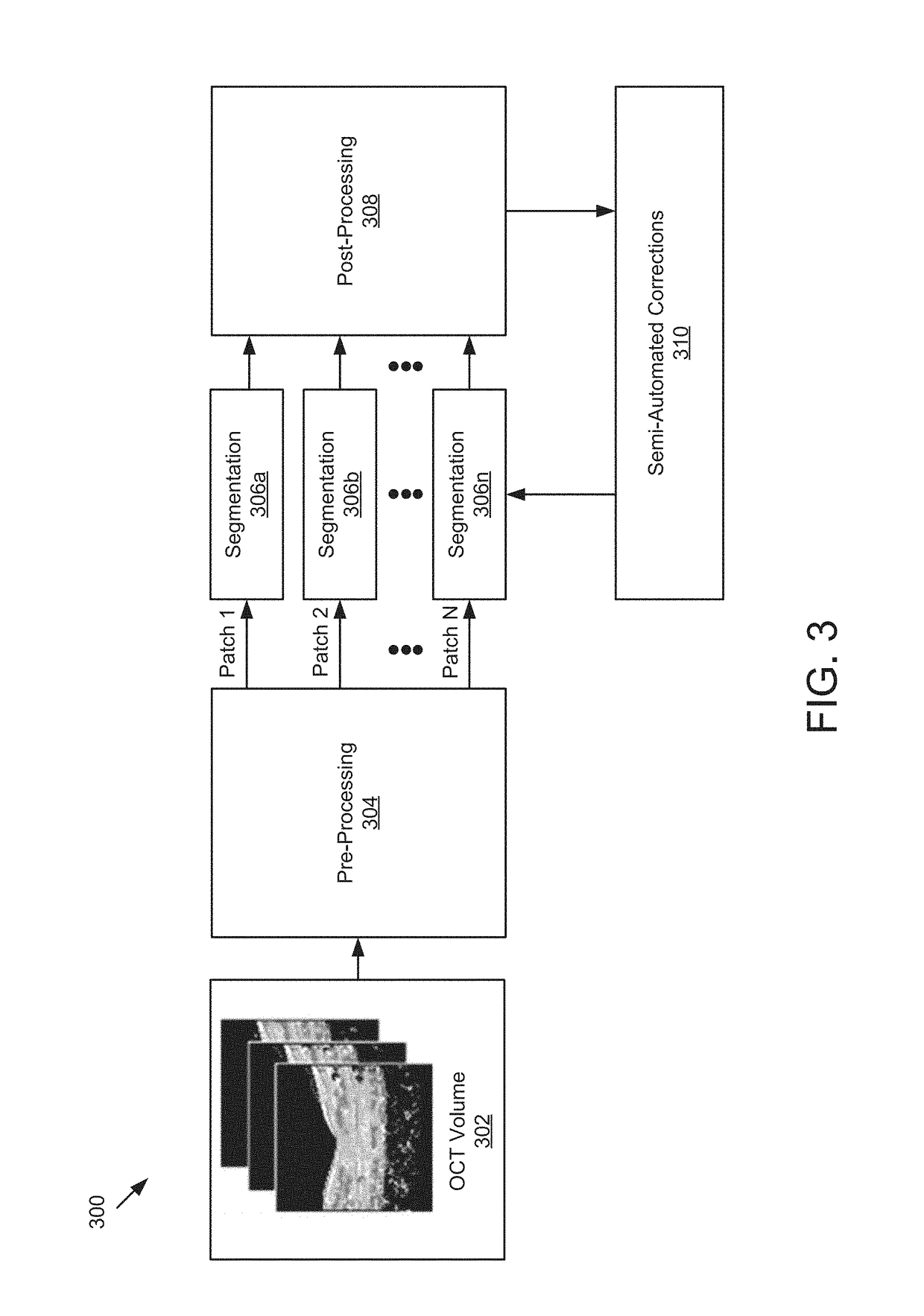Methods and systems to detect and classify retinal structures in interferometric imaging data
a technology of interferometric imaging and classification methods, applied in image analysis, image enhancement, instruments, etc., can solve the problems of inconvenient or even impossible manual segmentation of human operators in high-throughput clinical environments, high computational and execution time requirements, and high difficulty in segmentation, so as to reduce the number of redundant processing and reduce the segmentation error
- Summary
- Abstract
- Description
- Claims
- Application Information
AI Technical Summary
Benefits of technology
Problems solved by technology
Method used
Image
Examples
Embodiment Construction
[0031]All patent and non-patent references cited within this specification are herein incorporated by reference in their entirety to the same extent as if the disclosure of each individual patent and non-patient reference was specifically and individually indicated to be incorporated by reference in its entirely.
[0032]FIG. 2 illustrates a generalized Fourier Domain optical coherence tomography (FD-OCT) system 200 that is used to collect an OCT dataset suitable for use with the present set of embodiments. As depicted, the FD-OCT system 200 includes a light source 201, typical sources including, but not limited to, broadband light sources with short temporal coherence lengths or swept laser sources. Light from source 201 is routed, typically by optical fiber 205, to illuminate the sample 210, which could be any of the tissues or structures within an eye. The light is scanned, typically with a scanner 207 between the output of the fiber and the sample, so that the beam of light (dashed...
PUM
 Login to View More
Login to View More Abstract
Description
Claims
Application Information
 Login to View More
Login to View More - R&D
- Intellectual Property
- Life Sciences
- Materials
- Tech Scout
- Unparalleled Data Quality
- Higher Quality Content
- 60% Fewer Hallucinations
Browse by: Latest US Patents, China's latest patents, Technical Efficacy Thesaurus, Application Domain, Technology Topic, Popular Technical Reports.
© 2025 PatSnap. All rights reserved.Legal|Privacy policy|Modern Slavery Act Transparency Statement|Sitemap|About US| Contact US: help@patsnap.com



